Related Research Articles

Clarissa Harlowe Barton was an American nurse who founded the American Red Cross. She was a hospital nurse in the American Civil War, a teacher, and a patent clerk. Since nursing education was not then very formalized and she did not attend nursing school, she provided self-taught nursing care. Barton is noteworthy for doing humanitarian work and civil rights advocacy at a time before women had the right to vote. She was inducted into the National Women's Hall of Fame in 1973.

Felix Weihs de Weldon was an American sculptor. His most famous pieces include the United States Marine Corps War Memorial in the Arlington National Cemetery, Virginia, US, and the Malaysian National Monument (1966) in Kuala Lumpur.

First Army is the oldest and longest-established field army of the United States Army. It served as a theater army, having seen service in both World War I and World War II, and supplied the US army with soldiers and equipment during the Korean War and the Vietnam War under some of the most famous and distinguished officers of the U.S. Army. It now serves as a mobilization, readiness and training command.
The 1988 Armenian earthquake, also known as the Spitak earthquake, occurred on December 7 at 11:41 local time with a surface wave magnitude of 6.8 and a maximum MSK intensity of X (Devastating). The shock occurred in the northern region of Armenia which is vulnerable to large and destructive earthquakes and is part of a larger active seismic belt that stretches from the Alps to the Himalayas. Activity in the area is associated with tectonic plate boundary interaction and the source of the event was slip on a thrust fault just to the north of Spitak. The complex incident ruptured multiple faults, with a strike-slip event occurring shortly after the initiation of the mainshock. Between 25,000 and 50,000 were killed and up to 130,000 were injured.
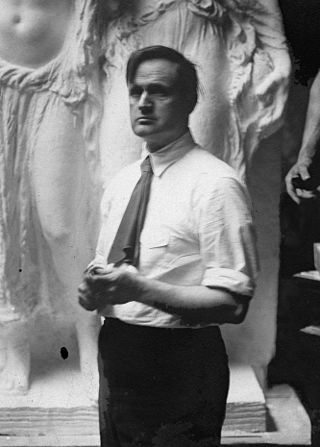
James Earle Fraser was an American sculptor during the first half of the 20th century. His work is integral to many of Washington, D.C.'s most iconic structures.

There are many outdoor sculptures in Washington, D.C. In addition to the capital's most famous monuments and memorials, many figures recognized as national heroes have been posthumously awarded with his or her own statue in a park or public square. Some figures appear on several statues: Abraham Lincoln, for example, has at least three likenesses, including those at the Lincoln Memorial, in Lincoln Park, and the old Superior Court of the District of Columbia. A number of international figures, such as Mohandas Gandhi, have also been immortalized with statues. The Statue of Freedom is a 19½-foot tall allegorical statue that rests atop the United States Capitol dome.

The Armenian General Benevolent Union is a non-profit Armenian organization established in Cairo, Egypt, in 1906. With the onset of World War II, headquarters were moved to New York City, New York.

Haig Patigian, was an Armenian-American sculptor.

The Armenian Relief Society (ARS), is an independent, nonsectarian, philanthropic society serving the humanitarian, social and educational needs of Armenians and non-Armenians alike. It operates as a non-governmental organization and has entities in 27 countries.

The Armenian Assembly of America is the largest Washington-based nationwide organization promoting public understanding and awareness of Armenian issues. The organization aims to "strengthen United States/Armenia relations, promote Armenia's democratic development and economic prosperity, and seeks universal affirmation of the Armenian genocide" via "research, education and advocacy."
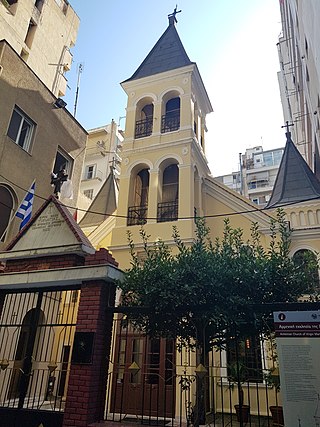
The Armenians in Greece are Greek citizens of Armenian descent. The Armenian presence in Greece began centuries ago when Armenians, for various reasons, settled in the wider area of Thessaly, Macedonia (Thessaloniki) and Thrace. Traces of Armenians can also be found on the Greek islands of Crete and Kerkyra (Corfu). The Armenians in Greece however, acquired the character of a community after the 1920s, when 70,000 to 80,000 survivors of the Armenian genocide fled to Greece from Cilicia, Smyrna, Ionia, Constantinople and other regions of Asia Minor, scattering all over Greece.

The American Red Cross National Headquarters is located at 430 17th Street NW in Washington, D.C. Built between 1915 and 1917, it serves both as a memorial to women who served in the American Civil War and as the headquarters building for the American Red Cross. It was declared a National Historic Landmark in 1965.

Kanaker-Zeytun, is one of the 12 districts of Yerevan, the capital of Armenia, located in the northeastern part of the city. As of the 2011 census, the population of the district is 73,886.
Roman Bronze Works, now operated as Roman Bronze Studios, is a bronze foundry in New York City. Established in 1897 by Riccardo Bertelli, it was the first American foundry to specialize in the lost-wax casting method, and was the country's pre-eminent art foundry during the American Renaissance.
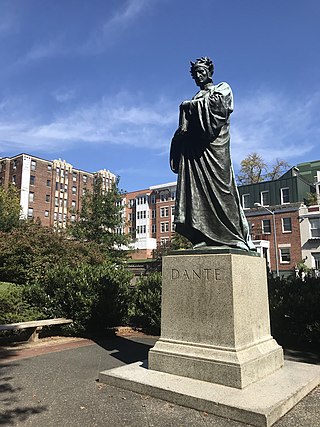
Dante Alighieri, is a public artwork by Italian artist Ettore Ximenes, located at Meridian Hill Park in Washington, D.C., United States. Dante Alighieri was originally surveyed as part of the Smithsonian Institution's Save Outdoor Sculpture! survey in 1994. The monument is a tribute to Italian poet Dante Alighieri.

Frederick Keep Monument is a public artwork by American artist James Earle Fraser located in Rock Creek Cemetery in Washington, D.C. The monument was originally surveyed as part of the Smithsonian's Save Outdoor Sculpture! survey in 1993. This sculpture rests at the site of the grave of Frederick and Florence Keep and their child.
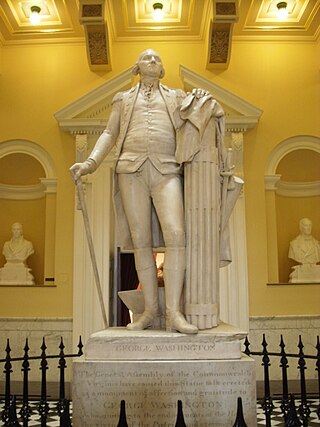
George Washington is a statue by the French sculptor Jean-Antoine Houdon from the late 18th century. Based on a life mask and other measurements of George Washington taken by Houdon, it is considered one of the most accurate depictions of the subject. The original sculpture is located in the rotunda of the Virginia State Capitol in Richmond, Virginia, and it has been copied extensively, with one copy standing in the United States Capitol Rotunda.
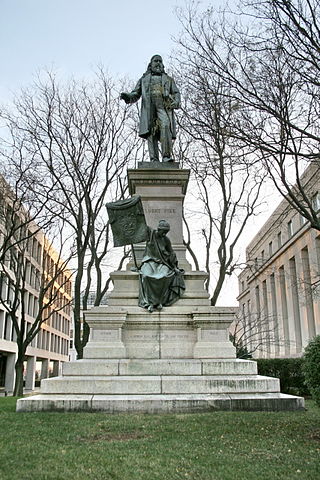
The Albert Pike Memorial is a public artwork in Washington, D.C., erected in 1901, and partially demolished in 2020 by protestors responding to the murder of George Floyd. It honors Albert Pike (1809–1891), a senior officer of the Confederate States Army as well as a poet, lawyer, and influential figure in the Scottish Rite of freemasonry. The memorial—which now only includes the base and Goddess of Masonry sculpture—sits near the corner of 3rd and D Streets NW in the Judiciary Square neighborhood. The memorial's two bronze figures were sculpted by Gaetano Trentanove, the Italian-American sculptor of another Washington, D.C., sculptural landmark, the Daniel Webster Memorial. The dedication ceremony in 1901 was attended by thousands of Masons who marched in a celebratory parade.

Captain Nathan Hale is a bronze statue of Nathan Hale, by Bela Lyon Pratt. It is located at the south facade of the Robert F. Kennedy Department of Justice Building, 10th Street and Constitution Avenue, Northwest, Washington, D.C.
References
- ↑ "Armenian Earthquake, (sculpture)". SIRIS
- ↑ National Headquarters, American Red Cross Marker
- ↑ "Armenian Earthquake Memorial at the Red Cross Bldg in Washington, D.C." Archived from the original on 9 April 2019.
{{cite web}}: CS1 maint: unfit URL (link)